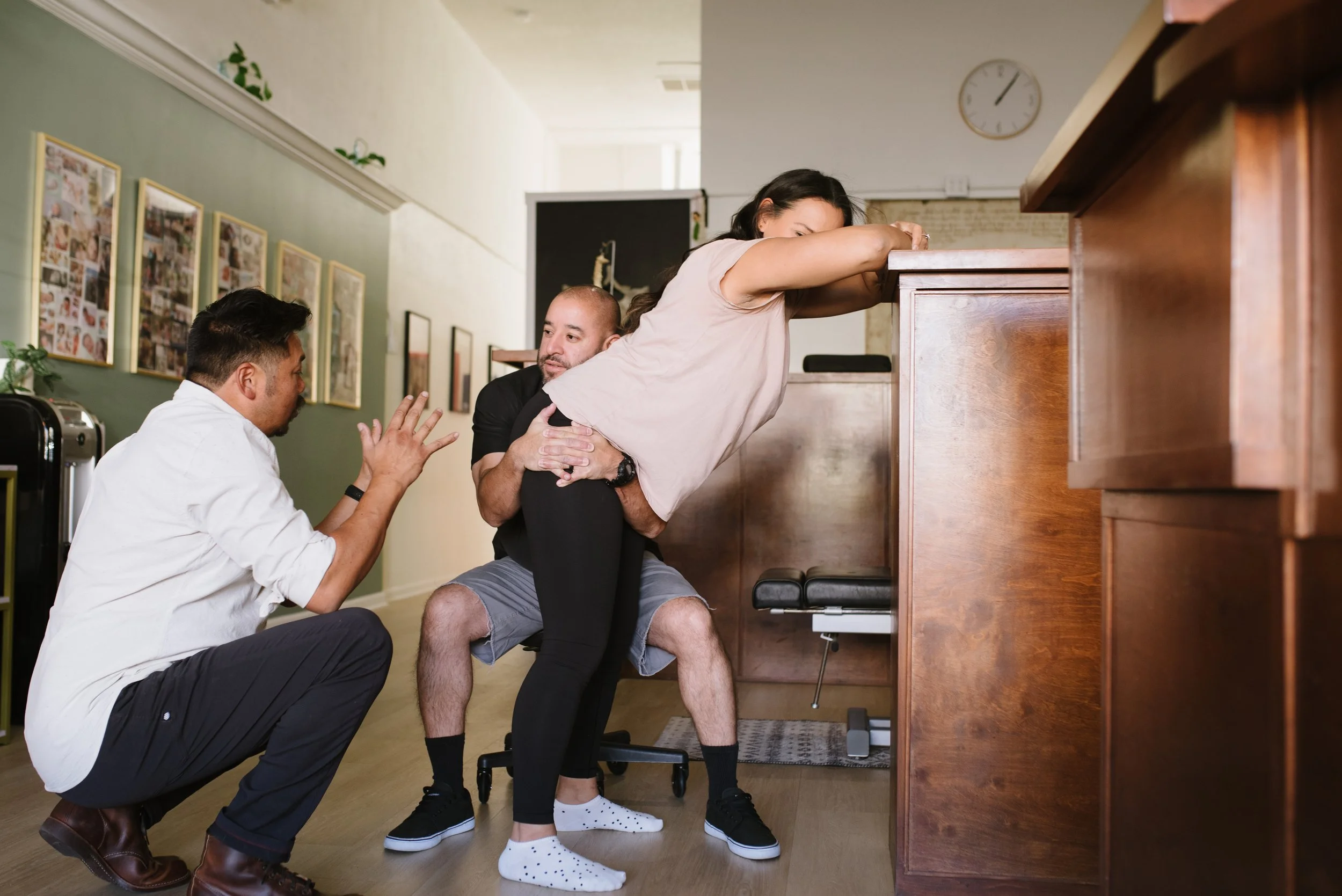Symphysis Pubis Dysfunction
What exactly is Symphysis Pubis Dysfunction (SPD)? During pregnancy or birth, about one in 35 women will experience intense pelvic pain and may find it difficult to walk, climb stairs, and other movements that involve the pelvic bones. This pain is a result of separation of the pubic symphysis which is a joint in the very front part of the pelvic bone structure. There is cartilage that fills the gap in the bones. During pregnancy, hormones such as relaxin soften this cartilage allowing the pelvic bones to be more flexible for delivery. Some women, however, have too much play in the pelvis causing a large gap between the bones. This makes the symphysis pubis area extremely sensitive to touch.
When does separation of the symphysis pubis occur? Some women will notice pain beginning as early as the first trimester of pregnancy while others experience this separation during the birth or even a few days postpartum. Women who have experienced SPD with previous pregnancies will not necessarily have the problem with subsequent pregnancies however, some will.
How do you know if you have SPD? If you have SPD, you may notice pain in the front of the pelvis that hurts when touched. You may also feel pain in the lower abdomen, hips, inner thigh and groin areas. Marked increased pain with activities such as walking, climbing stairs, lifting your legs or any other large movements involving the pelvis are key symptoms. You may even experience a clicking type noise with movement as well. If you experience any of these symptoms, you should contact your caregiver for further testing.
Chiropractic Treatment of SPD
The Doctor will take a thorough medical history and do a full chiropractic and orthopedic examination to diagnose the condition.
Chiropractic treatment may involve:
Evaluation / treatment of the sacroiliac joints and pubic symphysis
Work on the soft tissues (muscles / ligaments)
Ligament release techniques
Diaphragmatic release
Blocking techniques (using wedge-shaped blocks placed under the pelvis to relieve the pressure on the joints)
Activator techniques (non-manipulative techniques for the dysfunctional joints)
Webster's technique (to treat malpositioned babies, often associated with SPD)
Application of ice
Exercise advice
Supply a sacroiliac (pelvic joint) stability belt
The majority of women who receive chiropractic treatment for SPD, before and after the baby is born, experience a positive response, particularly if the cause lies in pelvic misalignment. From the Chiropractic point of view, it is always better for a woman with mild SPD to get treatment early on to prevent the problem from becoming more severe later or impeding the birth of your baby.
Self-Help Information
It is important to ask for help and accept help at every opportunity. The key points to remember are:
Take tiny steps to go upstairs one at a time, setting off with your better leg if you have one and bringing the second leg to meet the first before going up another step. Walking sideways upstairs is often easier!
Use a pillow between the legs when sleeping and under the 'baby bump'
Sit without crossing the legs and sit evenly on both buttocks
Stand with even weight on both feet
Keep the legs symmetrical when moving, sitting, standing, and laying down
Avoid lifting, twisting, prolonged standing, strenuous activity, vacuum cleaning etc.
Bend the knees and keep the legs 'glued' together when turning in bed and getting in/out. Silk/satin sheets can help to make it easier to turn over in bed
Avoid straddle movements and squatting
Move slowly and without sudden movements. Be extremely careful not to slip
Rest - take the weight of the body off the pelvis whenever possible
Sit down for tasks usually completed standing e.g. getting dressed, ironing, preparing food etc.
If possible, shower rather than bath
Obtain a pelvic support belt
Listen to your body - do not do too much of any one thing, i.e. Do not walk too far, do not sit for too long, do not exercise for too long - if it hurts, don't do it!

